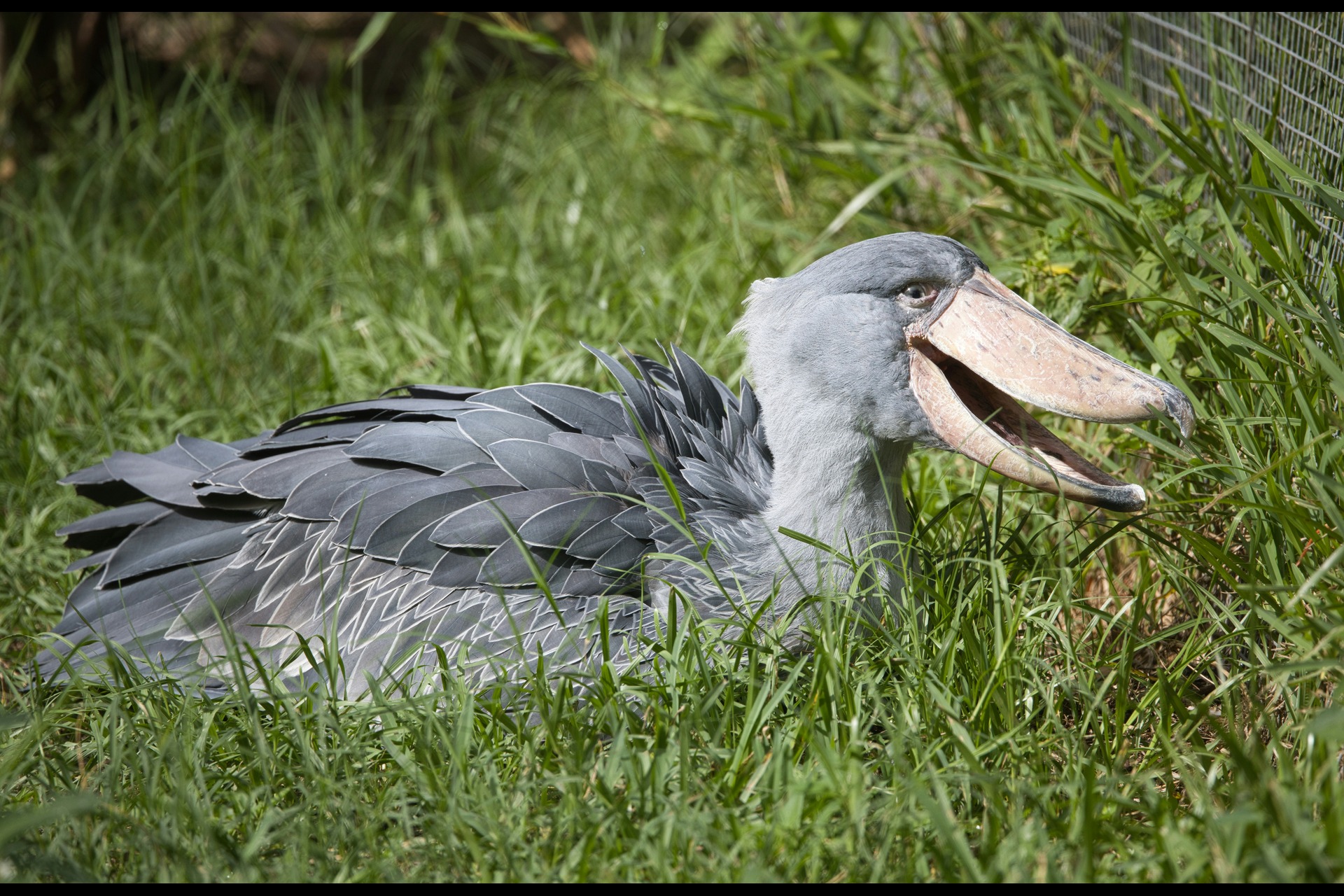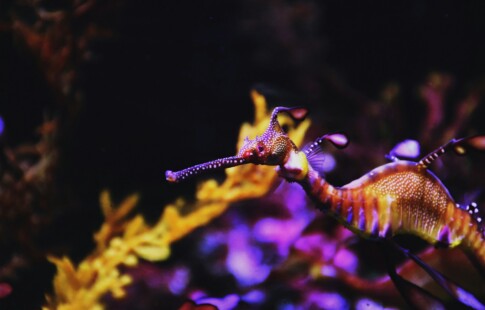
Shoebill Stork Sound: The Dinosaur Call of the Wetlands
We are reader-supported. When you buy through links on our site, we may earn affiliate commission.
Today’s birds are modern-day descendants of prehistoric dinosaurs, but only very few species make that link awfully obvious. One such creature is the shoebill stork, with its towering frame, piercing stare, and rex-like gait. However, the true surprise doesn’t lie in its physique, but in the moment it opens its break. You would expect an eerie vocalization straight from Jurassic Park, only to be met with Call of Duty noises for its machine-gun-like growl.
This strange disconnect in the shoebill stork’s sound has captured the internet’s attention, spawning viral videos and a newfound fascination with one of Africa’s most elusive birds.
Meet the Shoebill: Africa’s Most Ancient-Looking Bird
Standing up to 4.5 feet tall with an eight-foot wingspan and a heavy, shoe-shaped bill that gives it its name, the shoebill or Balaeniceps rex is an unmistakable creature. They’re native to East-Central Africa’s freshwater swamps and dense marshes, particularly in Uganda, Zambia, Tanzania, and South Sudan.
The bird cuts a slate gray silhouette with unnerving stillness between papyrus and reedbeds. It moves slowly and steadily, swiping deliberately for prey in the shallow, slow-moving waters. The dense vegetation offers cover and nesting material, with plenty of foraging opportunities for the carnivorous shoebill.
The Shoebill’s Startling Signature Sound
To hear a shoebill in the wild is to witness one of nature’s strangest acoustic phenomena. The call begins as a hollow rattle strikingly similar to the firing burst of automatic gunfire. It is a mechanical sound called bill-clattering, created when the bird forcefully claps its upper and lower mandibles together.
It’s similar in principle to how storks or herons communicate, but vastly louder, eerier, and more dramatic due to the size and depth of their clog-like beaks. Vocal squeals and shrieks often accompany the rattling.
The shoebill uses this aggressive call for various reasons. When nesting, parents use it to communicate with their chicks. Adults use it as a greeting, a courtship call for mates, or a territorial warning for potential threats, particularly during breeding season. To the human ear, the sound reverberates through the wetland air like an unnatural rattle of death.
Communication, Courtship, and the Power of Silence
Compared to dinosaur noises in pop culture, many of which are natural sounds stitched together from gargling alligators, tiger snarl,s and even baby elephant squeals, the shoebill’s call is not so much a roar, but is likened to castanets.
While this aggressive sound defines the creature, the call contrasts with its stealthy and silent demeanor. Shoebills are notoriously patient hunters. They stand still in shallow oxygen-poor waters for hours and even overnight, waiting for their next fish, eel, frog, or baby crocodile to surface for air. This style of predation demands complete silence — one reason why the feathered predator is often described as a statue with wings.
However, the shoebill’s rattle becomes essential for social behavior, especially courtship. Researchers have noted that males use beak-smacking in elaborate mating rituals, often accompanied by bowing displays and head shaking. Chicks also learn to bill-clatter from a young age, but the sound is more similar to hiccups than growls. Little ones use it to communicate hunger or stress to their parents.
The Shoebill Social Media Frenzy
Despite its haunting call and serious demeanor, the creature has become something of an internet darling. Social media posts regularly feature clips of the bird clattering its beak like a prehistoric percussionist, often captioned with humorous or awe-struck reactions. Many of these clips describe the shoebill’s prehistoric appearance, with one even comparing it to Big Bird from Sesame Street. A popular TikTok video points out that its scientific name, Balaeniceps rex, echoes that of its distant cousin, Tyrannosaurus rex — earning it the nickname B-rex.
One shoebill that captured the internet’s heart is Sushi, a resident of the Uganda Wildlife Conservation Education Center. Among the viral content is a video by Cam Whitnall, the Managing Director at The Big Cat Sanctuary in the UK. He documented his close encounter with Sushi and later commemorated the experience with a fine-line tattoo of the bird on his leg.
This attention has helped raise awareness, but also underscores a conservation paradox. Shoebills are currently classified as Vulnerable by the IUCN Red List. Their habitats are constantly threatened by development, pollution, and climate change-induced flooding. Illegal pet trade and egg collection have also impacted their numbers.
Fortunately, conservation organizations are leveraging the bird’s online fame to promote sustainable wetland protection, support local ecotourism, and fund habitat restoration. In Uganda and Zambia, community-based conservation is growing, and tours help locals protect the species while benefiting from eco-travel initiatives.
Where You Can Hear the Shoebill Stork Sound
One of the best places to encounter the shoebill is on a birding safari in Uganda, particularly in the Mabamba Swamp near Lake Victoria. Mornings are ideal for tracking them due to the cooler temperatures. The dry season from January to March is the best time to spot the wetland hunters.
These creatures are also found in South Sudan’s Sudd region, a vast wetland and a stronghold for the species thanks to its extensive papyrus vegetation. An estimated 3,830 shoebills inhabit this region.
For those unable to fly to Africa, there are still opportunities to see and hear a shoebill up close. A few are housed in U.S. zoos, including two at the Dallas World Aquarium, featured in a recreated South American rainforest exhibit. There are two more at ZooTampa in Florida, which has become the first institution in North America to hatch a shoebill chick successfully in captivity.
FAQs About the Shoebill Stork
The renewed interest in the shoebills has people asking questions about this fascinating creature. Here’s what everyone is so curious about.
What does a shoebill stork sound like?
It makes a loud, rapid bill-clattering noise that resembles a machine gun or castanets.
Why do shoebills make that noise?
Shoebills clap their bills together to communicate with other birds, such as when greeting mates, signaling danger, or interacting with their chicks. However, this behavior is not constant, and the shoebill is usually silent most of the time.
Do all shoebills make this sound?
Adults and chicks display the beak-smacking behavior, although chicks make noises similar to hiccups instead of loud growls since they do not have the strength or coordination just yet.
Are shoebill sounds a form of vocalization?
No, it’s a mechanical sound made by clapping the upper and lower parts of the bill together.
Is the shoebill stork a stork?
While commonly called the shoebill stork and has a stork-like appearance, it is not actually a stork. It belongs to its own unique family, Balaenicipitidae, and is more closely related to pelicans and herons.
Do shoebill birds still exist?
Yes. BirdLife International estimates that about 3,300 and 5,300 adults can be found in Africa’s wild marshes.
Are shoebill storks friendly?
Yes. While they sound sinister because of their call, they are docile to humans. As long as the individual doesn’t act threatening, shoebills tolerate their presence even within 6 feet of their nests. It will not threaten humans but will stare at them.
Is it true that shoebills are silent hunters?
Yes. Despite their intimidating sound, they hunt silently and patiently in swampy waters. They can go for hours and even through the night, waiting for their prey to come within striking distance.
Can I see and hear a shoebill stork in the wild?
Yes, especially in Uganda’s Mabamba Swamp, where guided birdwatching tours are available.
Are there shoebill storks in America?
Yes. There are shoebill storks in America, specifically at Dallas World Aquarium and ZooTampa in Florida.
Help Keep the Shoebill’s Voice Alive
The shoebill stork’s machine-gun-like rattle may be weird and wonderful, but it needs protection as the species is constantly threatened. This prehistoric link may be lost to extinction if people fail to protect the wetlands it calls home. While a handful of these birds live in zoos, nothing compares to hearing that resonant bill-clatter in the wild, among the reeds, the still water, and the soft hum of untouched ecosystems.
Share on
Like what you read? Join other Environment.co readers!
Get the latest updates on our planet by subscribing to the Environment.co newsletter!
About the author
Grace Waters
Always inspired by the natural world around her, Grace grew up exploring tide pools and hiking mountain trails, developing a deep appreciation for biodiversity and conservation. Now, Grace works as the Editor of Environment.co where she covers topics related to emerging clean technologies, zero-waste initiatives, and the intersection of environmental policy and everyday living.





